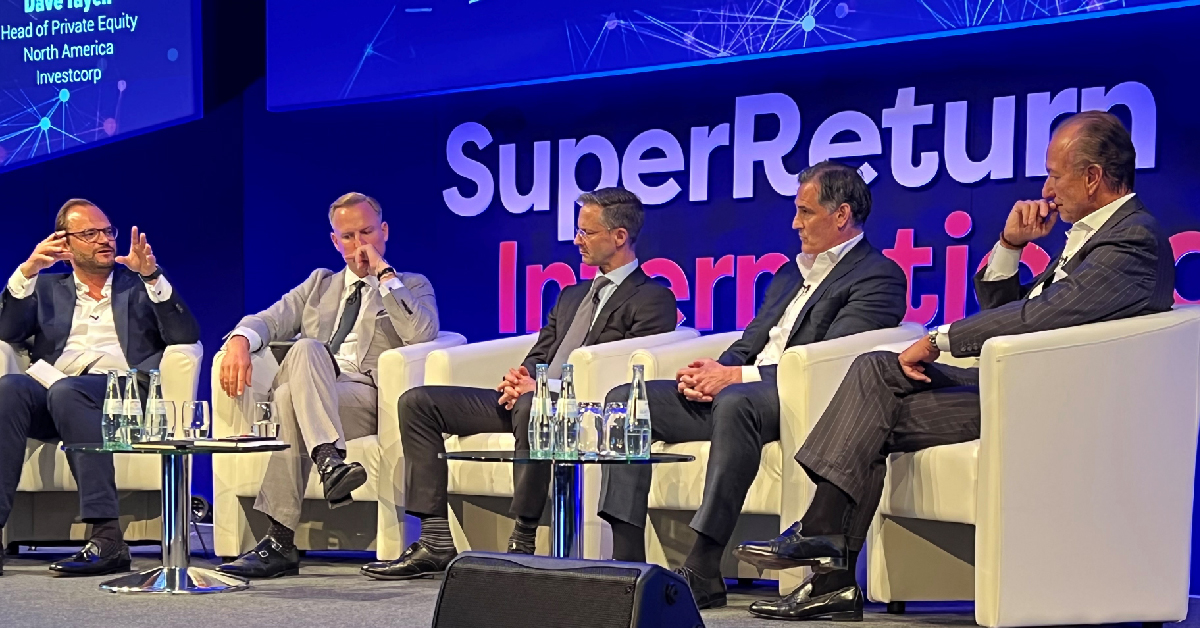The private equity industry gathered in large numbers for this year’s SuperReturn conference in Berlin, Germany. There was excitement in the air – the conference took place at full capacity for the first time since the onset of the pandemic.
But the mood was noticeably gloomy at times. General Partners (GPs) are preparing their investment teams and portfolio companies for a new, more challenging era. A critical consideration that has emerged: GPs need ensure their communications approaches evolve and continue to be supportive of these new, dynamic strategies.
New paradigm
Bumps were expected coming out of the pandemic, but the reality is worse than feared. War in Ukraine and geopolitical uncertainty; price inflation and rising rates; and supply chain disruptions are coming together to create a new paradigm. The result is that we are entering the most challenging phase in more than a decade.
Inflation and interest rates were top of mind in Berlin. Asked what the biggest challenge for the year ahead was, almost all panellists responded “inflation”: the conference took place against the backdrop of monetary authorities announcing further rate hikes, including the Fed and the Bank of England.
Time for alpha
The fact is the low-interest rate environment since the GFC has lifted all boats. It pushed more institutional money into private markets, creating a fundraising bonanza, and it helped support valuation-multiple growth that drove high asset prices. As beta recedes in the wake of higher rates – something very visible in the public markets – alpha generation is back to the fore, and will define the winners and losers of this next era.
It will be important for GPs to communicate their value creation strategy and differentiate from the competition. Specialisation is one aspect LPs are more focused on, whether by sector or geography. It’s an opportune time for deep value investors to highlight their skill sets, while growth investors will need to show how they can separate the wheat from the chaff. There’s plenty of buying opportunities as prices come off their peaks.
Without being able to rely on market beta, there is a renewed need for GPs to showcase operational expertise – through case studies, executive profile raising, and thought leadership.
In the near-term, pricing expertise and procurement capabilities are key. Megatrends like digitisation and ESG also continue to be a focus for LPs and portfolio companies. In the medium term, many investors are also eyeing P2Ps given the public markets are in bear market territory, so understanding public market communications will be necessary for many GPs in the months ahead.
Growing pains
Growth also presents challenges. Private equity AUM has grown significantly, and in the last few decades the largest firms have seen employee numbers increase in lockstep. PE is a people business, and despite the darkening clouds on the horizon, the war for talent rages on. This is true for GPs, as well as their portfolio companies.
Adding the right talent doesn’t just mean oversubscribed graduate schemes or even hiring the right skill sets. It also means maintaining the culture as new offices open and founding partners become a smaller proportion of the firm or move on entirely. While each firm’s approach to remote and flexible working can help define its culture, less time in the office makes developing and maintaining a cohesive culture more of a challenge.
PE has lagged from other sectors in terms of its employer branding. PE compensation is attractive, given its structure and level relative to other sectors like banking. However, compensation alone is not enough, and the PE executives that will emerge as leaders in the future will be the ones that consider their internal communications and a strong employer brand.
New audiences
The rotation of pension funds and other institutional investors into private markets has supported record fundraising. But that rate of institutional money is expected to slow given the macroeconomic environment and relatively high levels of LP allocations to PE in recent years.
GPs are actively pursuing other sources of capital. A few have listed on public markets and now have to consider public company communications. As the IPO market is likely closed this year and into next, some GPs are looking for stake financing that could create additional communications needs for their employees, LPs, and other stakeholders.
There is also a growing discussion of the democratisation of private equity and opening up the asset class to retail investors. Just as higher returns and lower liquidity are appropriate for many institutions, it is also the case for some individuals. Furthermore, tokenisation of the asset class could create more liquidity in the secondary market in the not-so-distant future.
Down, but not out
Uncertainty abounds in the macro-environment, and no one is willing to call when the rate-rising cycle might end and how deep any recession could be. But there’s a clear track record the most storied firms can point to, which goes back more than five decades and includes many challenging cycles. For all GPs, telling their value creation story in the right way is becoming more important than it has for many years.


